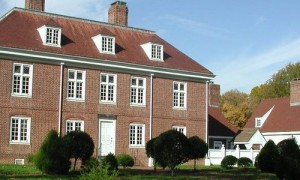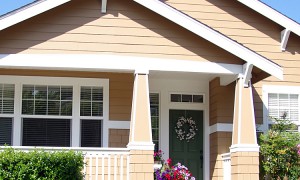Older homes tend to cause a split reaction among potential buyers. There are those who love the charm, the history, and the craftsmanship of nineteenth century Gothic architecture and specifically request to see homes for sale from this era. Then there are those who shy away from properties with older heating, plumbing, and electrical systems in favor of modern efficiencies. But if peeling back layers of wallpaper to find 100-year-old writing on the wall excites you, then a focused real estate search will direct you to houses with identifiable Gothic elements in the city of Philadelphia and the suburbs.
Characteristics of Gothic Architecture
Gothic architecture originated in the twelfth century, primarily in cathedrals and churches across Europe. Although the word Gothic often has a dark connotation, two key characteristics of this style are light and height. High pointed arches are a focal point of Gothic structures, as are ribbed vaults, which open up ceilings. Compared to earlier architectural styles, Gothic buildings stood with less support, allowing for more windows and an abundance of light.
The Gothic Revival
In the mid-nineteenth century, a Gothic revival began in Europe and swept across the Atlantic. The Gothic revival influenced many grand structures built in Philadelphia during this time, such as Saint Mark’s Episcopal Church and the Pennsylvania Academy of Fine Arts. Another example of Gothic Architecture from the same era is the University of Pennsylvania’s College Hall, which, according to the university’s website, was reputed to be alumnus and cartoonist Charles Addams’ inspiration for the Addams Family’s Mansion.
America’s Interpretation – Carpenter Gothic
In the United States, a simpler style, known as Carpenter Gothic, was incorporated into the revived Gothic style of nineteenth century houses. During this time, wood was plentiful and used as a substitute for the stone and bricks commonly used in Gothic style structures. The famous painting “American Gothic” by Grant Wood shows a farmer and his daughter in front of a white Carpenter Gothic style home.
In addition to board and batten siding, other key characteristics of Carpenter Gothic houses include pointed arch windows and cross gabled roofs with overhangs and bay windows. With the invention of steam-powered saws that could cut intricate scroll patterns, decorative trim was often added to porches or bargeboards.
A self-guided walking tour of Doylestown borough, specifically Clinton Street and Ashland Avenue, offers you many fine examples of Gothic architecture, including scrolled woodwork on porches and pointed arch windows, some even have stained glass. Many homes in the borough post signs that display the original construction dates to give you a feel for the range of homes constructed in the 1800s.
Preservation and Maintenance of the Carpenter Gothic Style
Like all older homes, Gothic houses can be difficult to maintain. Wood exteriors require frequent repainting and weatherproofing, especially in the diverse climate of Philadelphia where the change in seasons causes board siding to expand and contract. As moisture reaches wood exteriors, siding can warp, resulting in cracking and chips in the paint. Stripping and repainting the ornamental scroll embellishments often seen on the front porches of Carpenter Gothic style houses can also be time consuming.
The upkeep or total restoration of a wood sided home can be challenging and expensive compared to houses with vinyl siding, but those who truly enjoy and admire old homes recognize the importance of Gothic architecture’s contribution to defining American architecture during the second half of the nineteenth century.
[cf]skyword_tracking_tag[/cf]






